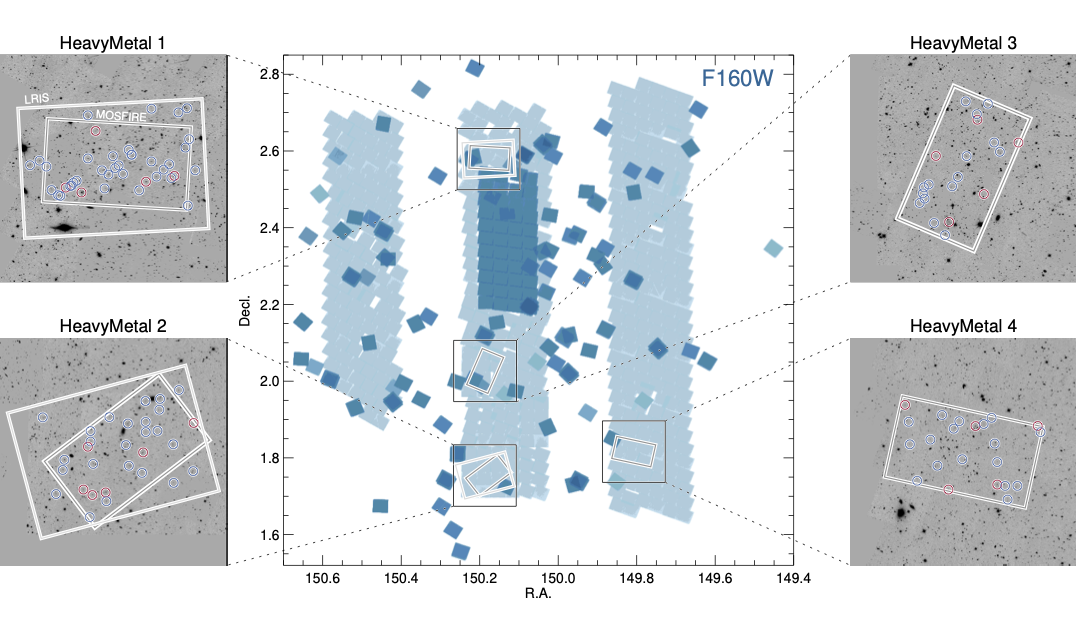Overview
The Heavy Metal Survey is an ultra-deep spectroscopic program with LRIS and MOSFIRE on the Keck I Telescope to study the stellar, chemical, and kinematic properties of 20 massive quiescent galaxies when the universe was 3 to 4.5 billion years old. The Heavy Metal Survey is executed in the overlapping area of the UltraVISTA and COSMOS, and COSMOS-DASH surveys. The primary galaxies are divided over two redshift intervals (z~1.4 and z~2.1), for which we observe numerous Balmer and metal absorption lines in atmospheric windows. For each redshift interval we observe two pointings, which target 5-6 quiescent galaxy candidates simultaneously. The observations were conducted over 26 nights, from January 2017 until January 2022.

Acknowledgements
We acknowledge support from an NSF AAG collaborative grant (AST- 1908748 and 1909942). The Heavy Metal data were obtained at the W.M. Keck Observatory, which is operated as a scientific partnership among the California Institute of Technology, the University of California and the National Aeronautics and Space Administration. The Observatory was made possible by the generous financial support of the W.M. Keck Foundation. We recognize and acknowledge the very significant cultural role and reverence that the summit of Mauna Kea has always had within the indigenous Hawaiian community. We are most fortunate to have the opportunity to conduct observations from this mountain.
